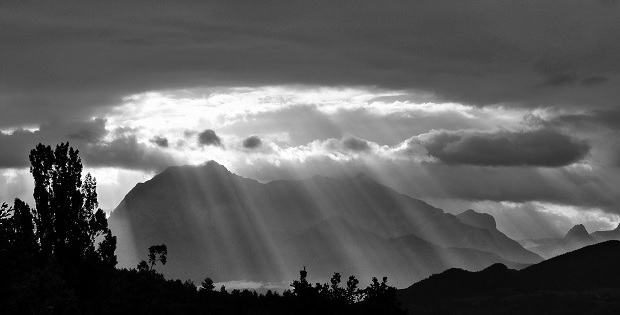
Do You Want To Do Black And White Landscape Photography?! Follow These Important Steps!
Some landscape photographers do prefer to capture images in black and white and they do it right. The upside about black and white landscape photography is that you don’t really need to wait until it gets a perfect weather to shoot. Everything is monochromatic and results could be very stunning. However, you might need plenty of contrast to make your photos outstanding.
With that being said, there are several important points to consider if you want to have impressive results. For example, you’ll need to know when it’s the perfect time to shoot for mono and how to capture the right image in colour.
This great tutorial shows you the crucial steps for a perfect black and white landscape photography.
Read through this amazing tutorial, and let us know what you think!
Black and white landscape photography: step 01 See in black and white
It’s tempting to only shoot in black and white when the sky’s overcast and you’re not getting any colour in your images anyway, but this rarely results in successful shots.
While it’s certainly true that a good conversion can make a flat colour original more dramatic, the key to a successful conversion is actually different colours – and specifically how these colours convert to different shades of grey.
Deep blue skies, for example, can be converted so they’re almost black, or a light grey, depending on the look you’re after.
In this respect, the more colourful your scene the better – a mixture of yellows, greens, blues and even reds will all contribute to your finished conversion.
Also look out for high-contrast areas, such as bright clouds against deep blue skies, or dark shadows against lighter backgrounds.
Black and white landscape photography: step 02 Invest in some filters
If you’re serious about landscape photography, investing in a set of filters will be money well spent.
A circular polariser is useful for boosting contrast in blue skies, and for eliminating reflections in water, while a set of graduated neutral density filters is essential if you want to avoid burnt out skies in high-contrast scenes.
If money is tight, just buy two (a one-stop and a two-stop) as you can always combine them to create a three-stop.
If you’ve never used a polariser or ND grad before, you’ll find the difference can be dramatic, and once you have used them, you’ll wonder how you ever managed without them!
Black and white landscape photography: step 03 Consider a long lens
Many of us make the mistake of assuming that you need a wide-angle to shoot landscapes.
However a longer zoom with a range of, say, 70-200mm or 100-300mm, can be extremely useful for picking out distant details – especially when you’re shooting somewhere as big and expansive as the UK’s Lake District.
The advantage of a zoom – as opposed to a fixed focal length lens – is that it enables you to zoom in and out and experiment with different crops and compositions.
It’s also worth trying to shoot vertically, as this will often result in a more balanced shot.
……………….
Read the full tutorial here at DigitalCameraWorld.com and learn all these important steps right there:
Black and white landscape photography: why rich color is the key to bold mono
Credits:
Article Source: Black and white landscape photography: why rich color is the key to bold mono